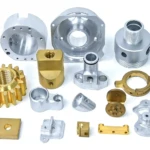The Power of 3D Printing Materials: Uncovering the Strength of Polymer Filaments
When it comes to creating strong parts through 3D printing, the choice of material is crucial. While the printing process plays a significant role, it is the material that determines many of the characteristics of the final component. In this blog post, we will dive into the world of 3D printing materials, exploring the different types, their strengths, and how to choose the right one for your needs.
Defining Resistance: An Essential Concept in 3D Printing
Before we begin, it’s essential to define what resistance is. Resistance refers to the capacity of a material to resist mechanical forces when used. This includes several factors such as traction resistance, deformation, and cracking. Understanding resistance is critical in 3D printing, as it helps us design and produce components that meet specific requirements.
Assessing Resistance: A Range of Methods
There are various ways to assess the resistance of materials, including hardness, impact resistance, compression resistance, resistance to elasticity, fatigue resistance, and flexion resistance. However, one of the most common measures is tensile resistance, which corresponds to the maximum load a material can withstand before rupture, subject to tension. In other words, it’s the force necessary to permanently stretch or break the material.
The Power of 3D Printing Materials: A Breakdown
Let’s explore the different types of 3D printing materials, focusing on their resistance to traction. We’ll take a closer look at the standard, technical, and composite materials used in Fused Deposition Modeling (FDM), one of the most popular 3D printing techniques.
Standard Materials: A Good Starting Point
Within the standard materials, we find PLA, ABS, and PETG. While they may not have the highest tensile resistance, they have a relatively high resistance to traction. For instance, APL, often considered a fragile material due to its sensitivity to UV light, has a tensile resistance of 53-59 MPa (around 7800-8250 PSI). Comparing it to ABS, which is generally considered solid, the latter’s tensile resistance is 34-36 MPa (around 4600 PSI).
Technical Materials: For High-Performance Applications
In the technical materials category, we find high-performance polymers like PEKK, UTM (Ultimaker), and Peek. These materials boast exceptional mechanical resistance, including tensile resistance. For instance, PEKK has a tensile resistance of 105 MPa (15,229 psi), while UTM has a resistance of around 70 MPa (10,153 psi). These materials are ideal for high-performance applications, but they can be challenging to print and are more expensive than standard materials.
Composite Materials: The Power of Reinforcement
Composite materials combine multiple ingredients to enhance their mechanical properties, including rigidity, heat resistance, and durability. There are three types of fibers commonly used:
Carbon Fiber: The Ace of Strength
Carbon fiber is the most powerful and expensive composite fiber, with a tensile resistance of approximately 4137 MPa (600,000 PSI) in pure form. When combined with other materials, carbon fiber can increase the strength of the final filament by around 40%.
Glass Fiber: A Feather in the Cap
Glass fiber, on the other hand, is less expensive than carbon fiber but still offers significant advantages in terms of mechanical properties. The tensile resistance of pure glass fiber is approximately 3450 MPa (500,380 PSI). When combined with other materials, glass fiber can enhance the strength of the final filament.
Conclusion
Choosing the right 3D printing material for your project is crucial, as it determines many of the characteristics of the final component. While standard materials like PLA, ABS, and PETG may not have the highest tensile resistance, they still offer a relatively high resistance to traction. Technical materials like PEKK, UTM, and Peek are designed for high-performance applications, while composite materials like carbon fiber and glass fiber can be used to further enhance mechanical properties.
Remember, understanding the resistance of materials is key to designing and producing components that meet specific requirements. By exploring the world of 3D printing materials, you can unlock new possibilities for your projects and unleash the full potential of additive manufacturing.

















